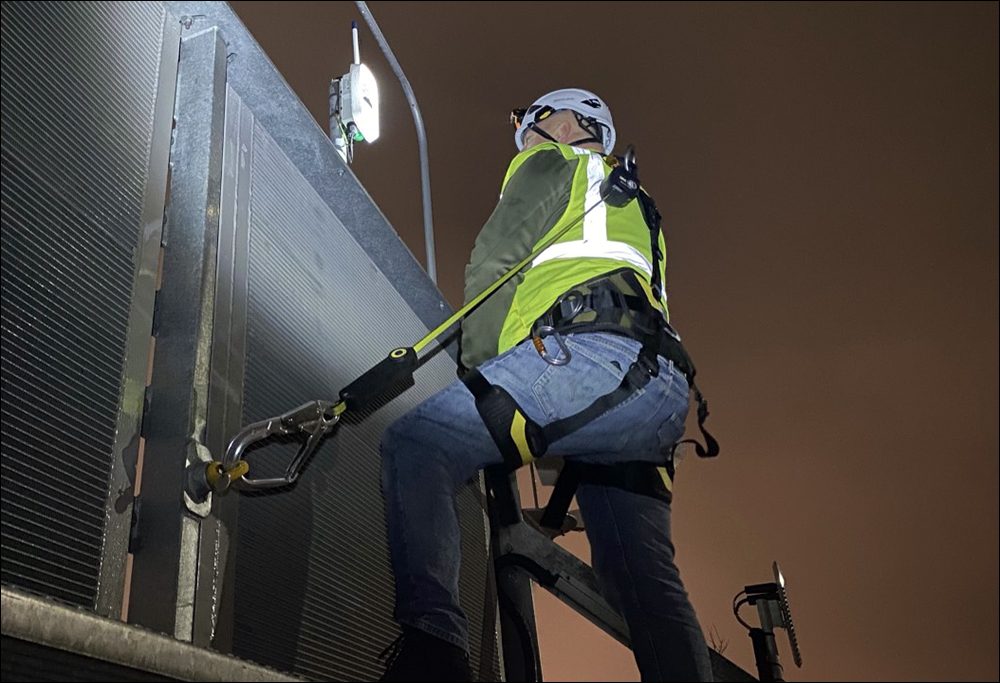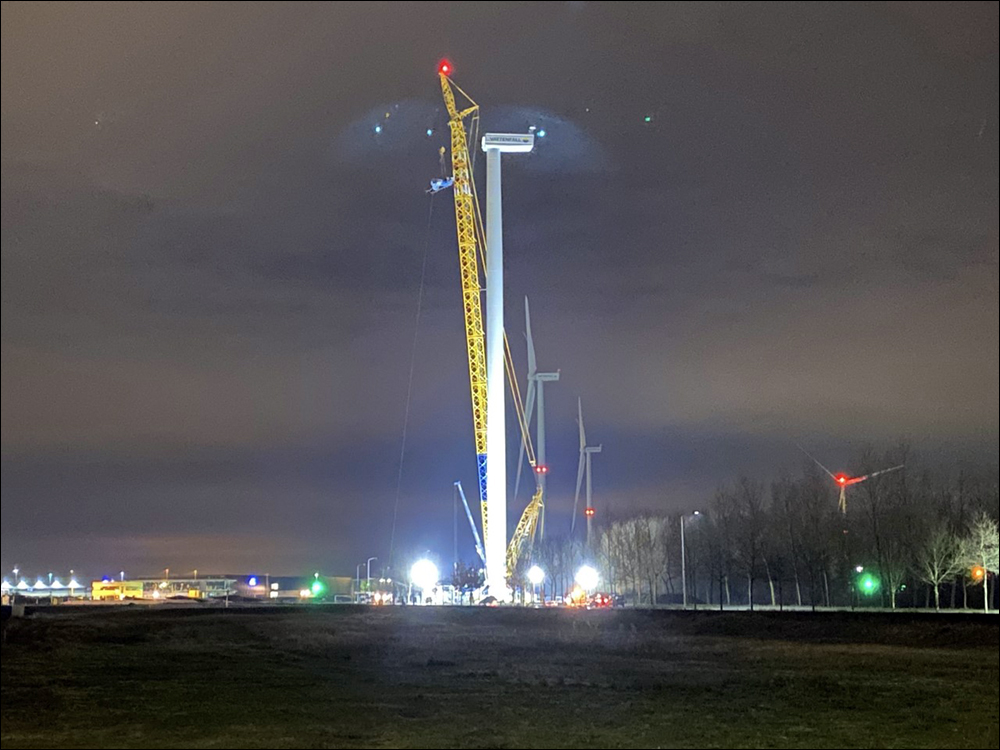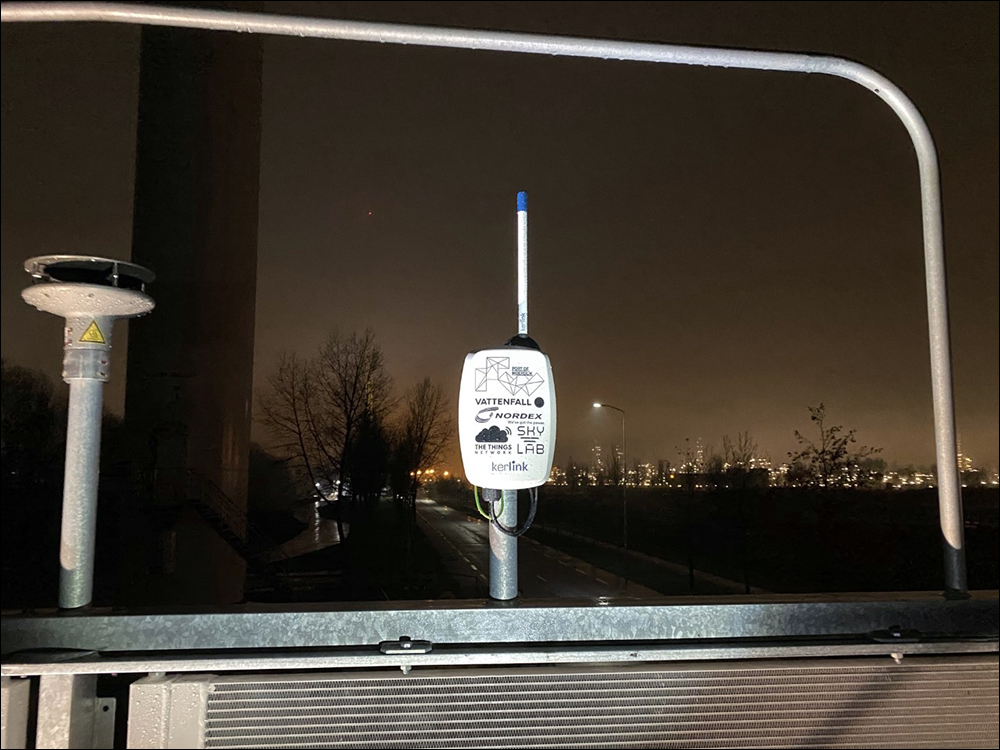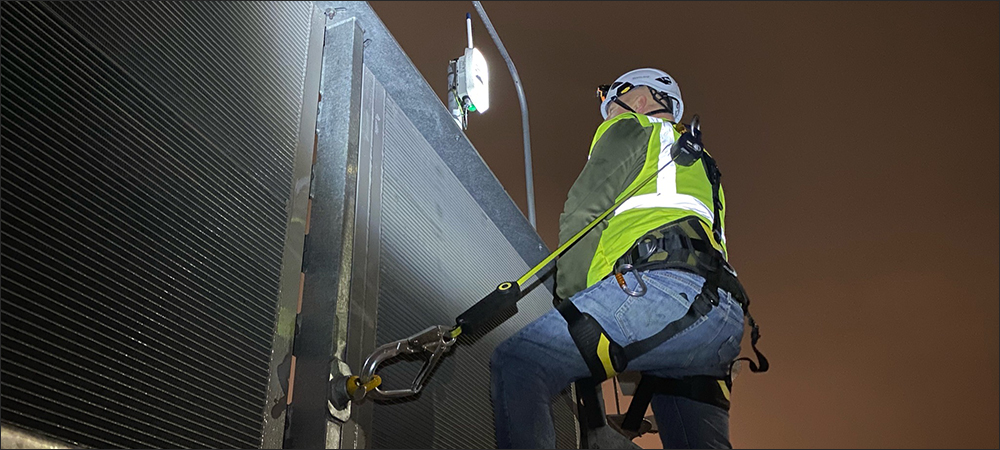With a public LoRaWAN Internet of Things (IoT) network extending across the world, many companies and entities are accessing and sharing data for public and private services. Their goal is to manage everything from utilities and smart-city sensor information to private asset tracking.
During the past several years, SkyLab has deployed LoRaWAN connectivity for industrial applications throughout the Netherlands. To date, the company has deployed about 70 gateways in that country. Last year, it installed IoT connectivity at a wind turbine farm to capture metrics from the turbines as well as offer coverage to other users, and that system is now in use by the neighboring Port of Moerdijk. The system employs Kerlink‘s Wirnet iStations, provided by SkyLab.

Energy company Vattenfall can use the system to manage its wind turbine conditions, with gateways installed last fall at its wind farm in the southern Netherlands municipality of Moerdijk. The IoT network, however, is now being used by the Port of Moerdijk as well, 120 meters (394 feet) below the wind farm along the North Sea river delta, according to Remy de Jong Sr., SkyLab’s founder.
Vattenfall is among the largest European green energy utilities (the name “Vattenfall” is Swedish for “waterfall”). In January of this year, the company installed the seventh and last windmill for its farm, known as the Windpark Industrieterrein Moerdijk. By deploying the SkyLab LoRaWAN solution, the company can track the wind farm’s conditions and thereby better manage energy generation.
The iStation gateways are powered by the spinning of the turbine blades, says Stéphane Dejean, Kerlink’s chief marketing officer. Each gateway is built directly onto a 120-meter-high Nordex wind turbine and can capture transmissions from LoRa sensors at a distance of about 45 kilometers (28 miles). The ruggedized gateway captures LoRaWAN transmissions and employs an embedded 4G module to forward the collected data back through the Internet, to the user.

Due to the transmission distance the gateways can accomplish, this IoT network project was commissioned by the Port of Moerdijk in collaboration with Vattenfall and Nordex. With the gateways in place, the energy company can collect data regarding the wind turbines, as well as environmental information. Next door, the port can monitor and manage the movements of equipment, vehicles, vessels and cargo. Additionally, surrounding municipalities can utilize the network for both public and private solutions.
“This case demonstrated they could create this private network to monitor metrics of the wind turbine,” Dejean says, “but also make the network open to other users to benefit industrial applications for neighboring industries.” Once the network was made available, more neighboring companies have shown an interest in using it for a variety of reasons. “That’s usually what we see.” The gateways are initially deployed for a single purpose, he explains, but are then expanded to other users.
The project is one of the major deployment of Kerlink’s gateways in the Netherlands, Dejean reports, as the City of Amsterdam and Schiphol International Airport deployed the technology in 2019. Provided by IoT solutions company MCS, the airport’s solution employs the same outdoor industrial iStation gateway. SkyLab’s systems are also helping to monitor gate and bridge status at the airport, as well as air quality and asset tracking.
SkyLab provides industrial solutions, including those for monitoring assets. “You can track your ships and cargo, monitor gates, doors, fire detection and climate protection,” de Jong says. Any deployment is free for users, he explains, as long as they have sensors to capture data, along with software to manage that information. The company has deployed the technology throughout the Netherlands as well, in a project to add to what is known as The Things Network.

The system leverages LoRaWAN connectivity that has been available in the city since 2015. The open system is being used for such applications as smart parking, smart agriculture, water management, and the tracking of bicycles and boats. The solution is also being employed for climate monitoring, measuring carbon dioxide levels in buildings for COVID-19 prevention, and counting the number of occupants in order to reduce coronavirus transmission or provide contact tracing.
SkyLab offers complete solutions to anyone that requests them, and many have already begun using other systems available on the market. “If they have special requests,” de Jong says, “we can build the solution for them.” For instance, SkyLab has created a solution for tracking the open or closed status of approximately 600 bridges throughout the Netherlands. LoRaWAN sensors send data indicating whether each bridge is open for ships to pass or closed to motor traffic.
The data is publicly available on the Blauwe Golf Verbindend platform and the government’s National Road Traffic Data Portal (NDW). Capturing and sharing bridge status data reduces traffic delays and improves air quality, the company reports, by reducing the queues of idling cars. It also provides a safety feature—for instance, by alerting rescue personnel to a particular bridge’s status if they need to respond to an emergency on that bridge, and by providing alternative routes via their navigation system.
In addition to the wind farm and port deployments, SkyLab is currently in the process of deploying IoT gateways at offshore windfarms and oil platforms in the North Sea, in order to extend the LoRaWAN network across the water. Freight forwarders and other companies can use the technology to track vessels, containers or water conditions, while search-and-rescue teams can utilize it to manage rescue operations.
The gateways have been installed on the North Sea coast, and they can receive and send data from up to 45 kilometers (28 miles) into the sea. When applied to offshore windfarms and oil platforms, the devices could provide full sea coverage, de Jong says. He predicts full coverage will be available by the end of this year, and that a Baltic Sea deployment may follow.


